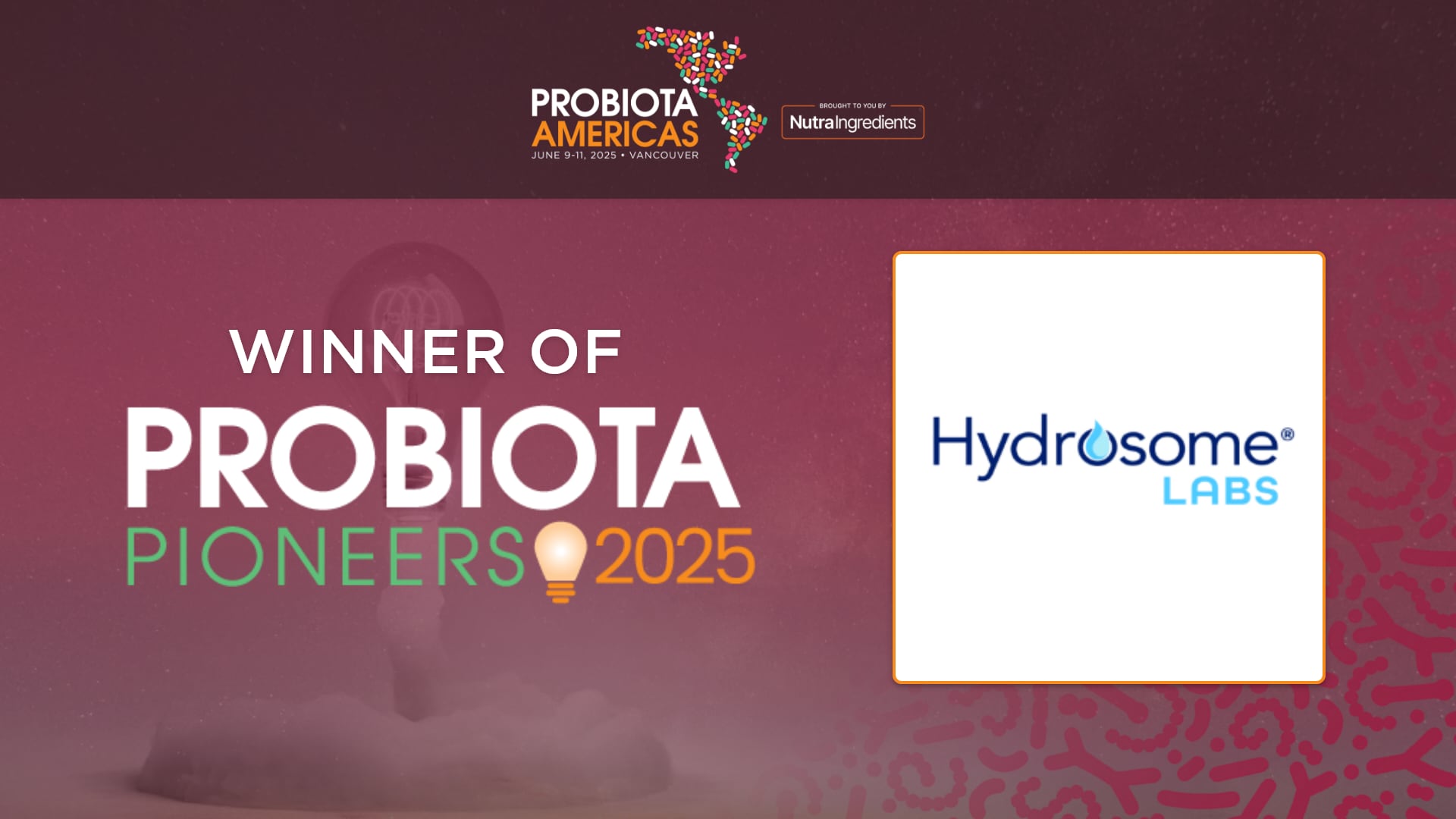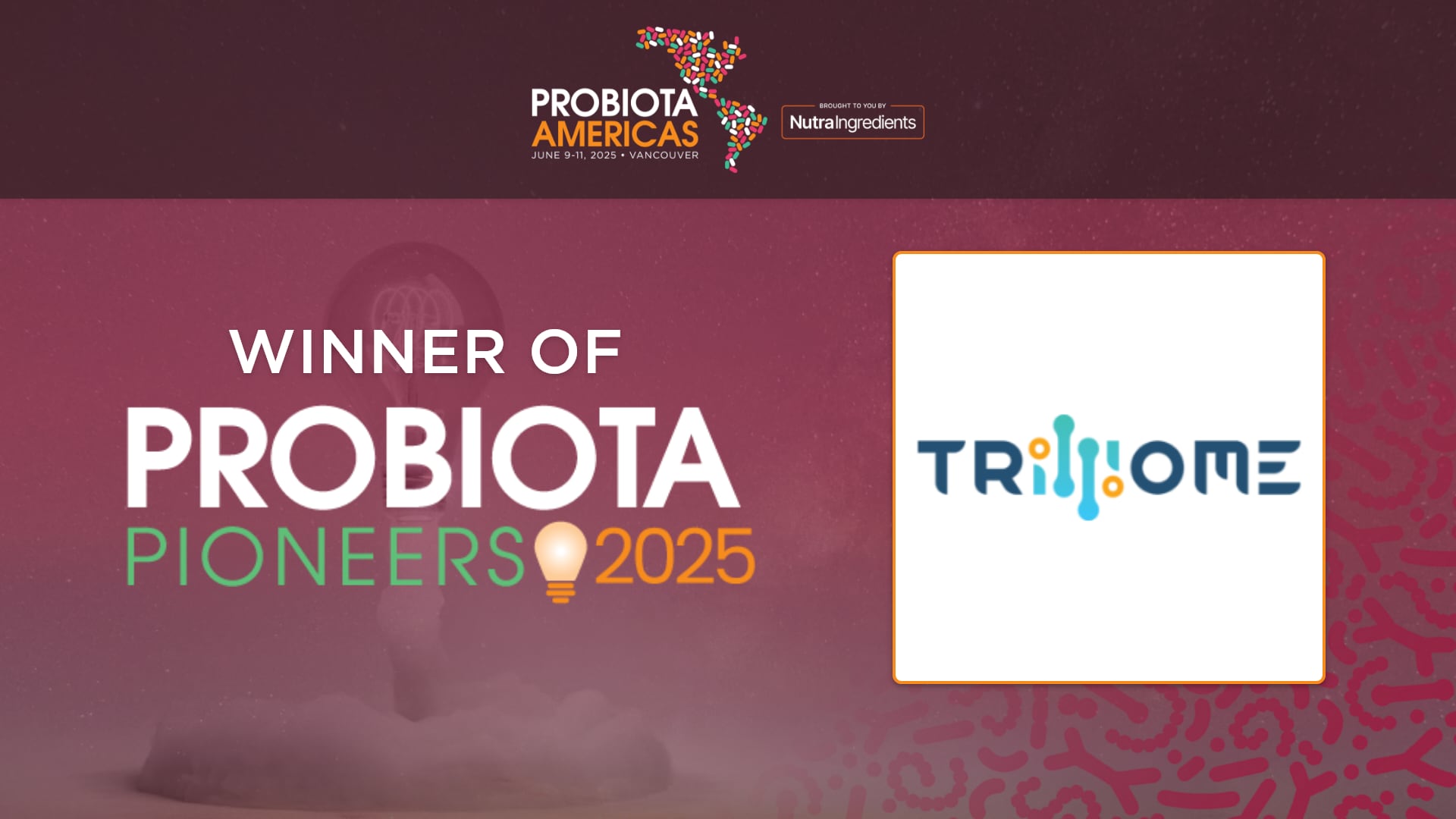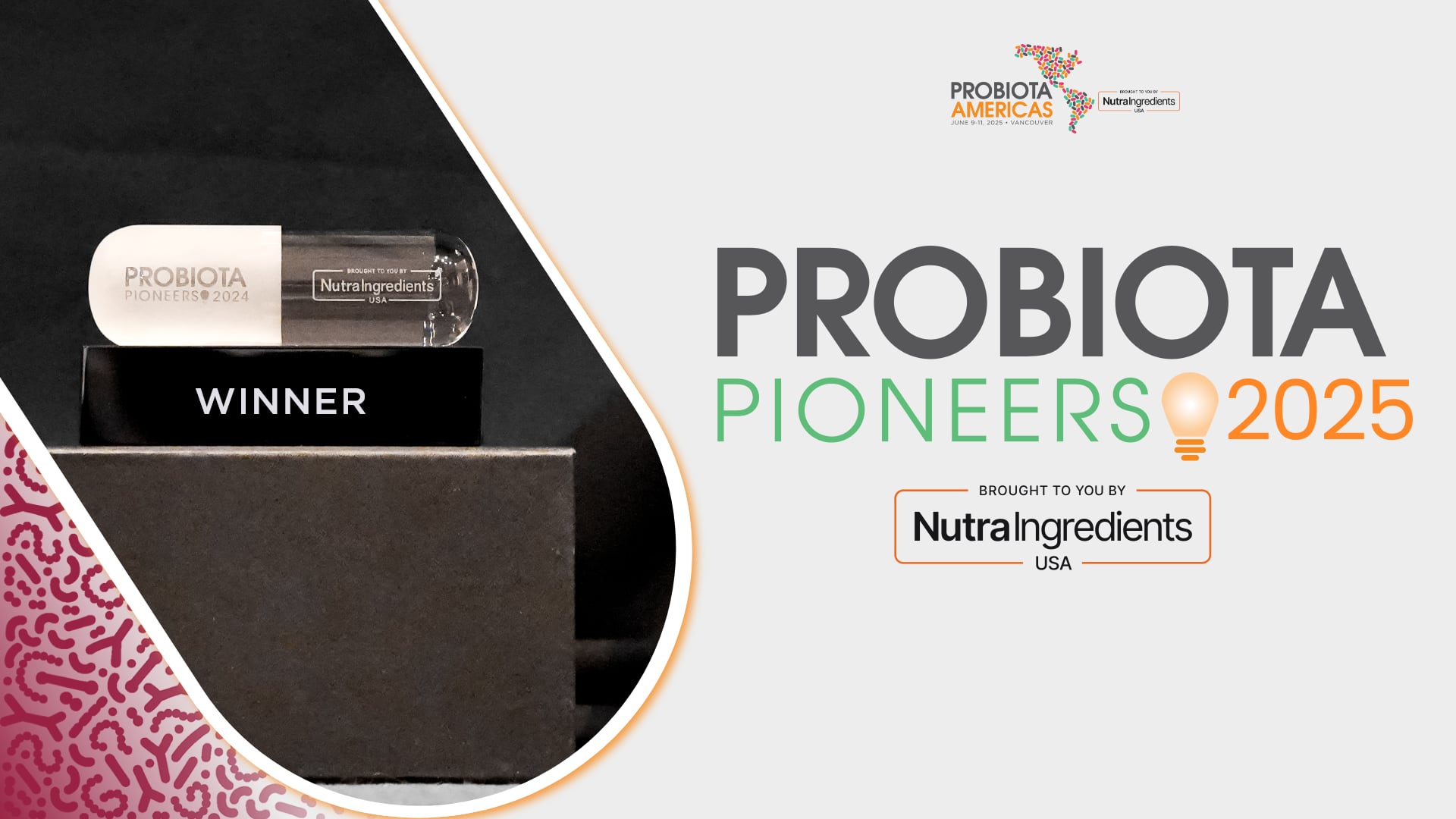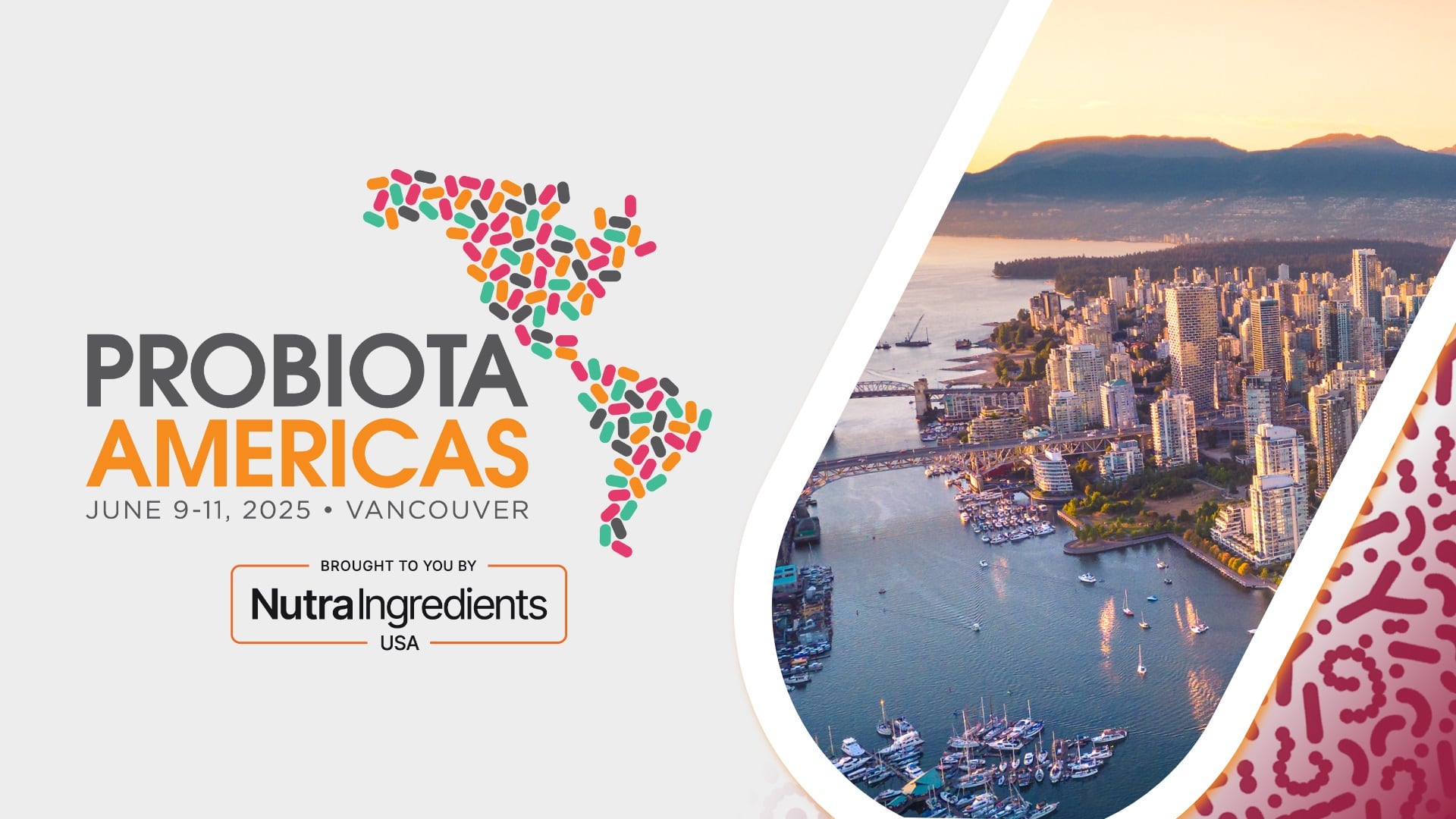Initially developed as a consumer bottled water concept, the technology, which produces bubbles invisible to the naked eye, showed potential for broader scientific and commercial applications, but its core mechanisms were not yet fully understood.
Recognizing an opportunity, Hydrosome Labs was formally incorporated in 2021, and it began building a multidisciplinary team of researchers, engineers and innovators committed to advancing ultrafine bubble science. This pivot from a consumer product to a platform technology has opened the door to novel applications across fields such as life sciences, nutrition, personal care and fermentation.
In this interview, Nick Jackowetz, PhD, senior vice president and principal scientist at Hydrosome Labs, discusses bridging nature’s simplicity with technological advancement, how the company is addressing the pain points of precision fermentation, the impact of ultra fine bubbles on the microbiome and what being named a 2025 Probiota Pioneer means to the company.
NI: What was the driving force behind the founding of Hydrosome Labs?
NJ: Hydrosome Labs was founded with a clear mission: to harness the transformative potential of ultrafine bubble (UFB) technology and redefine what’s possible across industries, starting with water but extending far beyond. From the beginning, we recognized that this wasn’t just a novel liquid—it was a new medium for delivering performance, efficiency and sustainability.
The idea that tiny, transient structures like ultrafine bubbles could dramatically improve ingredient bioavailability, support microbiome health or reduce dependency on synthetic additives sparked both scientific curiosity and a deep sense of purpose.
Our team came together not only to advance the science but to shepherd its real-world impact, bridging nature’s simplicity with technological advancement. Hydrosome Labs exists to turn that vision into reality, improving human and environmental health through innovations that are not only effective but also sustainable and accessible. We’re driven by the belief that scientific breakthroughs, when guided by integrity and purpose, can help build a better future.
NI: What has gone into scaling the business? Where are you now in your evolution and partnerships across industries, and what is next for Hydrosome Labs?
NJ: Scaling Hydrosome Labs has been a multifaceted effort, combining rigorous R&D with strategic funding to build a robust scientific foundation. Our initial focus on advancing UFB technology, followed by a dedicated effort to patent and refine these innovations, has allowed us to position ourselves as leaders in this space. We’ve carefully selected industries to initially target, such as agriculture and cosmetics, where we could quickly demonstrate measurable performance improvements without significant regulatory barriers. This approach helped us gain early traction with partners in these segments while continuing to develop UFB applications for more complex sectors like food & beverage, fermentation and pharmaceuticals.
Today, we’re working with more than 40 companies across multiple industries, including key partnerships in beauty care, precision fermentation and beverages. Our collaborations with prestigious research institutions, such as the University of Illinois, are instrumental in validating the broad applicability and benefits of UFB technology in everything from microbiome health to fermentation efficiency.
Looking ahead, we’re focused on scaling our partnerships further while also advancing scientific validation and developing new applications. With our strong patent portfolio and growing commercial momentum, we aim to lead in sustainable innovations that improve efficiency, performance and health outcomes. We’re particularly excited about the growing interest in our technology within fermentation and the potential for breakthrough advancements across other high-impact sectors.
NI: What are some of the challenges you’ve encountered in the first years of the business?
NJ: In the early years of Hydrosome Labs, we faced several challenges common to emerging technology companies. One of the primary hurdles was translating our scientific breakthrough into tangible commercial applications. While UFB technology held immense potential, it took time to understand its full range of benefits and how best to leverage it across different industries. In fact, one of our earliest challenges was deciding where to focus first. Because ultrafine bubbles have so many possible applications, we had to be highly strategic in narrowing our efforts to the areas where we could deliver the greatest near-term impact and build proof of concept.
Additionally, as with many deep-tech startups, securing funding to support our research, development and commercialization efforts posed a challenge. We had to strategically balance pursuing intellectual property protection, growing our patent portfolio and establishing partnerships while building a solid business infrastructure.
Another significant challenge has been educating the market. Since UFB technology is still relatively new, there was a learning curve in demonstrating its long-term value and practical applications. Overcoming skepticism and building trust in sectors that rely on traditional methods, like agriculture and fermentation, required persistence and strong scientific backing. This continues to be an area we actively work on, but we’re making strides every day in advancing the conversation and demonstrating the transformative potential of our platform.
Finally, like many fast-growing startups, we’ve had to carefully manage scaling. As our partnerships and commercial efforts expanded, balancing innovation with operational efficiency became increasingly important to avoid overextending our resources. Ensuring our team could grow in tandem with market demand remains an ongoing focus, and we continue to adapt and refine our approach to meet this challenge.
Through it all, we’ve stayed committed to our mission, investing in scientific validation and fostering strategic partnerships to build trust and credibility. With each challenge we face, we’re gaining valuable insights that only strengthen our resolve and make us better equipped to transform industries with our technology.
NI: What challenges is the fermentation industry facing, particularly in the microbiome space, and how does Hydrosome Labs contribute to addressing these challenges?
NJ: The fermentation industry, particularly in the microbiome and precision fermentation spaces, is navigating a range of complex challenges, from high production costs and scale-up difficulties to technical hurdles like contamination, energy consumption and process optimization. As companies strive to move from lab-scale innovation to commercial production, they often encounter roadblocks in achieving consistent quality, maintaining microbial viability and efficiently managing resource-intensive operations.
Hydrosome Labs helps address many of these pain points through our UFB technology. By dramatically improving the solubility and delivery of gases and nutrients, Hydrosomes shorten the lag phase, accelerate cell doubling rates and increase overall biomass. This directly translates into faster fermentation cycles, reduced energy usage and better yield, all without the need for new infrastructure or additional capital investment.
Since our UFB technology is compatible with both aerobic and anaerobic processes, supports multiple fermentation modes (batch, fed-batch, continuous) and integrates seamlessly into existing tanks, it allows companies to optimize performance without sacrificing scalability or regulatory compliance. Additionally, more efficient oxygen transfer and nutrient uptake can mitigate contamination risks and reduce reliance on costly culture media inputs, supporting both technical stability and cost-effectiveness.
In a sector under pressure to do more with less, Hydrosome Labs is helping fermentation innovators accelerate timelines, improve reliability and scale with confidence.
NI: How can ultrafine bubble technology/hydrosomes improve microbiome health?’
NJ: Our preclinical study found that adding air-filled UFBs in drinking water significantly altered gut microbiota composition in rats, particularly by increasing beneficial bacteria while decreasing less favorable bacteria over a 12-week period. These changes correlated with substantial improvements in gut health markers, including increased production of beneficial short-chain fatty acids which are important energy sources for gut bacteria and intestinal cells. The UFB water also led to significant reductions in inflammatory markers.
The mechanism likely involves the unique properties of UFBs, particularly their high surface-to-volume ratio and extended stability in liquids. Higher concentrations of these nanoscale bubbles may enhance interactions between the bubbles and gut bacteria, potentially improving local gas delivery and creating favorable microenvironmental conditions. Since many modern health conditions are linked to gut microbiome imbalances, this research opens new possibilities for therapeutic applications.
NI: As one of our pioneers, could you outline your approach or ethos in treading a path or direction that no other firm has gone before? How do you weigh up the risks and benefits here?
NJ: At Hydrosome Labs, we approach innovation with both ambition and discipline. When you’re developing a category-defining platform like ultrafine bubble technology, there’s no blueprint to follow, so our ethos is grounded in three principles: curiosity, evidence and responsibility. We’re constantly asking, “What if?”, but we pair that curiosity with a rigorous commitment to data. Every idea we pursue is backed by science and designed to create real-world value, not just theoretical potential.
We also recognize that being first means operating in a higher-risk environment. For us, the key to navigating that risk is transparency, both internally within our team and externally with our partners. We know we won’t have all the answers on day one, so we invest heavily in validation, peer-reviewed research and strategic collaboration with institutions and companies that help us test, refine and scale responsibly.
Ultimately, we believe pioneering new ground isn’t about rushing to be first. It’s about moving with purpose, staying open to new insights and maintaining the flexibility to pivot as the science and market evolve. We see risk as a necessary companion to innovation, and we manage it not by avoiding bold moves, but by making smart, informed ones.
NI: In the probiotic, prebiotic and microbiome space, what would you say is the next research area that the industry needs to keep its eye on?
NJ: Future microbiome research should focus on identifying and understanding specific microbial communities and their precise relationships with human health outcomes. While we’ve made tremendous progress understanding the gut microbiome broadly, we need more granular research into which specific bacterial strains, combinations and metabolites directly influence conditions ranging from inflammatory disorders to mental health.
The logical progression from this deeper understanding would be developing targeted approaches to precisely modify these microbial communities for therapeutic benefit. Rather than general interventions like broad-spectrum probiotics, future treatments might involve precisely engineered microbial strains, novel prebiotic compounds that selectively nourish beneficial species or even ultrafine bubble technology as shown in recent research. This precision approach would allow for personalized microbiome interventions tailored to an individual’s specific microbial profile and health needs, potentially revolutionizing how we address numerous conditions linked to microbiome dysbiosis.
NI: Finally, what is the significance for Hydrosome Labs of being named one of our 2025 Probiota Pioneers, and how do you think it helps your profile in such an innovative, ever-changing industry?
NJ: For a company advancing a novel scientific platform like ultrafine bubbles, being named a 2025 Probiota Pioneer is a powerful affirmation of the work we’re doing. It validates our belief that innovation in the microbiome space doesn’t just come from new strains or compounds. It can also come from reimagining how those ingredients are delivered, absorbed and activated within the body. This recognition highlights the growing awareness that enabling technologies like ours can unlock greater efficacy and help push the boundaries of health and wellness solutions.
It also helps elevate our voice within a fast-moving, evidence-driven community that values both bold ideas and rigorous validation. As we continue building partnerships and expanding our applications, being part of the Probiota Pioneer network allows us to collaborate with like-minded innovators, share emerging data and contribute to a more interconnected ecosystem of science and commercial development. It’s an honor, and a launchpad, for what comes next.
Probiota Americas 2025
Registration is open for Probiota Americas 2025, which will take place June 9-11 at The Westin Mission Bay Vancouver.
The three-day event will host sessions, discussions and roundtables on a wide range of topics including microbiome ecology and colonization, maternal and infant health, advances in genetic engineering and gene editing, identification and enumeration, personalized approaches to microbiome modulation, the state of the market, the evolving regulatory landscape in North America and what’s next in the biotics space.
Speakers include microbiome and industry experts affiliated with UC San Diego, Vidya, Joint Genome Institute, Morinaga, Synbiotic Health, Human Milk Institute, Novonesis, Kaneka Probiotics, Zbiotics, Université de Sherbrooke, Eurofins, Anabio Technologies, IFF Health Sciences, NPCS International, U.S. Pharmacopeia, Amin Wasserman Gurnani, Rothschild & Co., Lumina Intelligence, Genbiome, International Probiotics Association and WeCare-Probiotics.
To learn more and register for the event, visit the Probiota Americas site or download the advance program.




